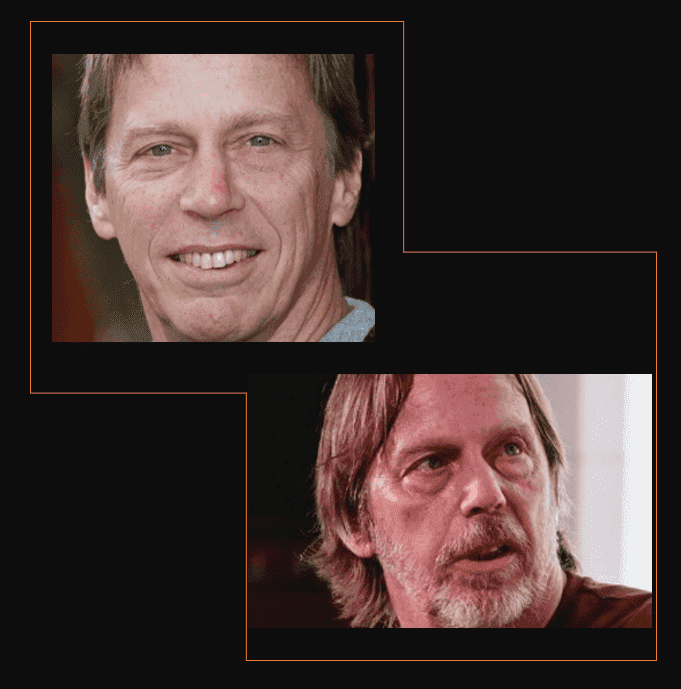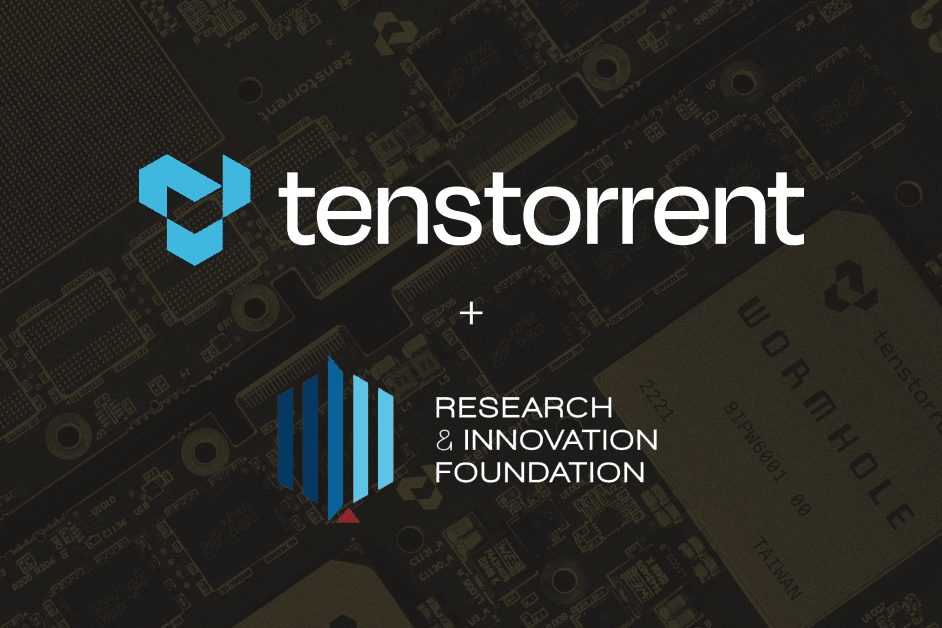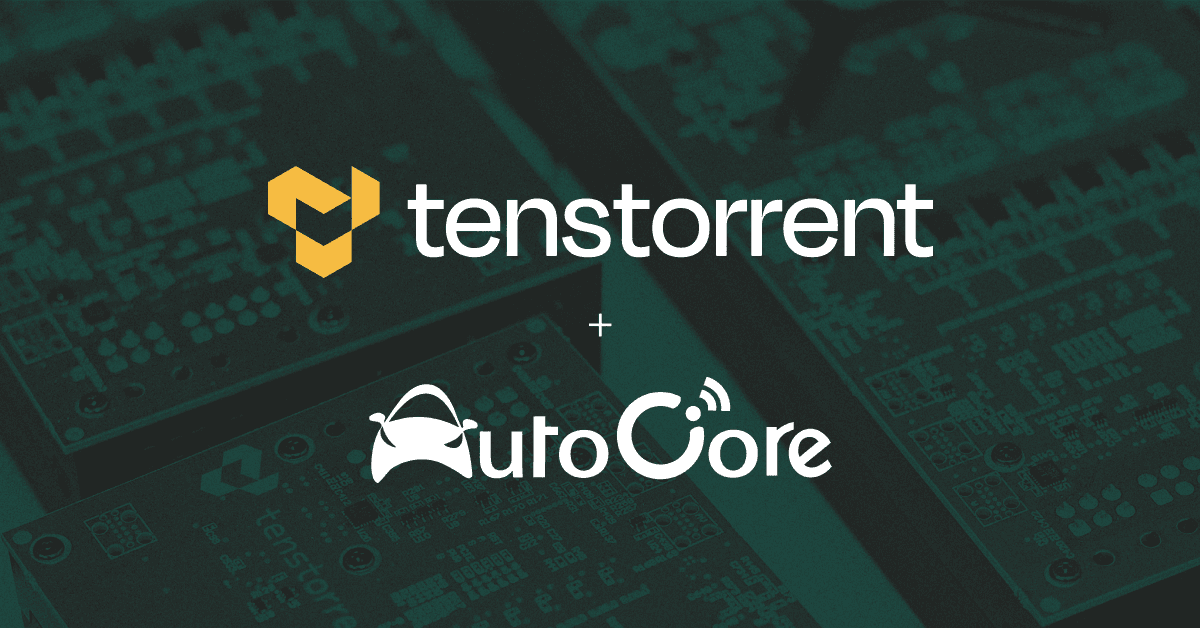The Ojo-Yoshida Report | Jim Keller’s Journey from CPUs to CEO

The following article was published in the Ojo-Yoshi report, you can read it on their site here.
'Lone wolf’ is the popular image for renowned computer architects. But Keller is no loner, having gone from hands-on engineer to CEO at AI chip startup Tenstorrent.
What’s at stake:
Although regarded as a “natural” in computer architecture, Jim Keller acknowledges he had to work hard to develop skills that enable him to lead thousands of engineers. How did he do it? What worked? What didn’t? Keller traces his evolution for us.
Practically everyone in the semiconductor world knows who Jim Keller is. The legendary CPU designer is revered throughout the engineering community.
Tracing a restless career path, Keller has led major projects at Digital Equipment, P.A. Semi, Broadcom, Apple, AMD, Tesla and Intel, producing results of which he remains proud.
Keller’s technical accomplishments tend to overshadow his record as a manager of engineering teams.
As he hopped from one organization to another, Keller was no “lone wolf” basking in the glow of his own genius while scorning the drudgery of teamwork. One might also imagine that his past technical achievements enabled him to cherry-pick the juiciest assignment at each new company. This presumption, too, does not seem to apply. Although Keller can be gruff and direct, he exudes optimism and is known to work and play well with others.
Learn to be a manager
The intricacies of computer architecture come naturally to Keller. His greater challenge was mastering the art, in each new organization, of working with peers and gaining trust from subordinates while ramrodding the job for which he was hired.
“I’ve done a lot of things,” said Keller, in a classic understatement (see chart below). He was the youngest fellow at Digital Equipment at age 26. He’s been a vice president at Tesla and senior vice president at Intel.
His roles have varied vastly, tracking the size of his teams and each company’s specific challenges. Was, for example, the company in a growth phase, treading water or in decline? Such factors altered the contour and the intensity of his responsibility.
So, what did he learn at each organization? What strategies worked and what didn’t?
I returned to AMD because I wanted to redesign the processor properly, and I wanted to save the company from bankruptcy." - Jim Keller
AMD changes Keller
Tracing back, Keller said he was mostly “a hands-on designer” who pretty much “designed everything” at DEC, during his first tenure at AMD, then at P.A. Semi, Broadcom and Apple.
Things changed, however, when Keller returned to AMD in 2012.
By then, his mission at AMD was “to redesign the processor properly.” And by the way, he added, “I wanted to save the company from bankruptcy.”
His new team at AMD included about 500 people, quickly expanding to 2,500. That’s when Keller hired a consultant. “I’ve never managed that many people,” Keller acknowledged. The consultant had him read “a bunch of management books, and we made plans.”
Keller took on his pursuit of management know-how humbly and methodically.
His advice from that experience: “Search for good management books, read the reviews, buy five of them, read them all. That will give you some ideas. Then go look for some more books to fill in some gaps. Then, you will know more about management than almost anybody.” The books he recommends include “Good to Great: Why Some Companies Make the Leap and Others Don’t” by Jim Collins and “Boyd: The Fighter Pilot Who Changed the Art of War” by Robert Coram. Keller describes the latter as “basically about leadership and operational effectiveness in teams.”
Could Keller have figured it out without reading all these books? Keller bluntly responds: “Not really.”
Keller rattled off his lessons learned. “First you need to decide if you want a big team, and if you do, you need to ask yourself if you want to make a big, elaborate plan.” Whatever the decision, Keller stressed, “Be clear with goals so that everyone can follow … or you might want to create small teams who have local autonomy.”
Next comes the Goldilocks issue of monitoring the team. “If you check on people every day, all they do is to tell you what you want to hear,” said Keller. “If you only check on them once a month, they often run off in different directions and the teams never go anywhere.”
“It turns out,” Keller said, “there’s a structure to all this.” He points to books that explain the art of “loosely organized independent teams with strong leaders.”
So when Keller arrived at AMD, he knew his mission had four steps: “organization, goals, capabilities and trust.”
AMD then was in bad shape. “AMD had no clear goals,” he said. Without clear goals, an organization is frail, and developing trust is next to impossible. One saving grace was that AMD’s engineers had “great capability.”
Keller firmly believes that despite the best intentions of the participants, groups can have “gaps” that impede progress. He said, “Some people recognize it, others don’t.” At AMD, he said, “I met some people who told me that the team could never build a world-class CPU, although I thought they could.”
Assessing his team, Keller realized that “this person knew 80 percent of this, and that person had five wrong ideas. And this person was pointing in the wrong direction.” These were “gaps” that proved correctable when team members were given a few, very clear goals, Keller said.
Keller observed that AMD, organizationally, had “some teams split across multiple sites, because they were worried that if a project got canceled, the company would fire everyone at the site. So, they gerrymandered the sites and the projects.” This tactic lowered each group’s effectiveness, Keller concluded.
He made “a bunch of changes” to get people in the right place. “Then, we partnered people, because people need to complement each other.”
Keller’s experience at AMD taught him to favor “small, autonomous teams where they know what their goal is, and they believe they can solve it.”
Tesla, then Intel
Keller’s next stop was Tesla.
Keller met Elon Musk and said, “I can drive a car in 18 months.” Musk said, “Okay, great, sounds good to me — if you can, make sure we have a backup strategy.”
Of course, Tesla then was a small company compared with AMD, which had thousands of engineers. “I went out and hired a team,” said Keller, “and we drove a car in 18 months.”
Keller’s next stop was Intel, where he had 10,000 underlings — another huge change.
Thus far, Keller has said little about why he left Intel in June, 2020. He told us last week that his experience there was “super fun.” Despite encountering many surprises along the way, Keller, looking back, is confident that he fixed a few things at the behemoth.
It’s more than likely that Keller faced resistance to the changes he introduced. Nonetheless, he stressed the positive connections he made at Intel while serving as senior vice president. “Believe me, I got hugged a lot at Intel.”
As Keller related, he came to Intel thinking he was going to “build these great supercomputers with all this great technology.” He quickly found out that “almost every methodology and process Intel had was broken.” He blamed this on the tendency to keep doing the same thing for too long, neglecting to change with the times.
Keller took this reporter’s notebook and drew a chart. “Here is a universal curve where people find problems and solve them. Then you ramp [your technology] and go into production. You reach a pinnacle. But then, you start failing.”
Foundries need what’s called a physical design kit (PDK), but Intel when I joined didn’t have one. I’m not kidding." - Jim Keller
In his analysis, “once you get successful, you go into production for a while, and the world [around you] starts to change.” Meanwhile, the Intel veterans who worked hard to lead the company and develop products were gradually disappearing. “They all retired.”
At Intel, “we had to reinvent methodology, we also had to update it. They had computer design tools that were out of date 10 years.” Keller said, “We identified the problems and we solved some.”
For example, Intel’s Grand Rapids CPU got a tenfold bug reduction, said Keller. “Foundries need what’s called a physical design kit (PDK), but Intel when I joined didn’t have one. I’m not kidding.” Now Intel has a PDK.
Keller said, “I gave a talk to the Intel fellows … and I yelled at them: ‘How did you let this happen?’” Keller added, “Some people at Intel love me and others hate me.”
Keller said Intel’s culture enabled all its fellows to focus exclusively on their research, rather than peeling some away into more-diverse challenges.
“Intel went from the best-execution company on the planet to a company that took itself for granted,” he said. “Many people got promoted, more people did more research.”
Keller observed that Intel CEO “Pat Gelsinger is trying to fix that … but he also appears to believe the solution is to build more [fab] capacity which kind of makes things difficult.”
Organization as a computer architecture
“I don’t tell this to people often, but because I am a computer architect, I tend to see an organization as computer architecture and think of people as a computer architecture problem,” Keller confided. “When you build a computer, you have a top-level design. And you break it into pieces. You can think of groups of people as functional blocks. Each group puts out expected behaviors.”
Keller recognizes that calling people functional blocks is bad form. But it is equally mistaken to pigeonhole Keller as a coldhearted engineer who can’t relate to people. Keller professes faith in people power. “People do unexpected things. And I’m curious about what happens.”
‘Maximal diversity’
When an organization is small, everyone knows each other. “It’s a funny thing. Nobody writes any management books about that,” said Keller. A startup that was productive at 20 people begins to slow down at 50. With 100 employees, the machine might well grind to a halt. Asked why, Keller said, “It’s because a 100-person team is not a big 20-person team. Humans don’t work like that. A 100-person team is broken into five separate teams of 20 people. As soon as you have five teams, they start getting involved in politics.”
As CEO of a startup, Tenstorrent, Keller has witnessed its teething pains. Since he first joined as CTO, Tenstorrent has grown from 60 to 300 employees.
In management terms, Keller stressed that a startup of 100 people, to succeed, doesn’t necessarily require a hundred of the smartest people. It needs “maximal diversity.” He said, “It’s good to have smart people and dumb people and hardworking people and lazy people. We need optimists and we need people who think that everything is going wrong. You need a good mix.”
Tenstorrent’s primary mission [today] is onboarding more customers and compiling more models performantly." - Jim Keller
Earlier this year, Keller switched jobs with Tenstorrent’s former CEO Ljubisa Bajic. In an interview last week, Keller revealed that Bajic, who became Tenstorrent CTO in January, has now departed Tenstorrent. Keller emphasized that Bajic has a seat on the board and is in touch with Keller. Citing Bajic’s decision to “basically go back into the research of AI,” Keller stressed Bajic’s expertise about how the models run on Tenstorrent’s architecture. Bajic also recently told Keller that a new AI model Bajic has been developing is working surprisingly well on Tenstorrent’s hardware.
Meanwhile, Tenstorrent has been busy hiring. It picked Keith Witek (ex-Google, ex-SiFive) as COO and David Bennet (ex-Lenovo Japan, ex-AMD) as chief customer officer. Tenstorrent also added a heavyweight, Raja M. Koduri, former executive vice president and chief architect at Intel, to its board of directors.
Keller made clear that Tenstorrent’s primary mission is “onboarding more customers” and “compiling more models.” He added, “The most important thing to me now is that we know what works and doesn’t.”
If there is real proof to Keller’s claim that he’s a people person, it might be the close “band of brothers” he has assembled over the years. Among similarly talented engineers in Keller’s circle are Peter Bannon, a Tesla director who worked with Keller at DEC, Apple and Tesla, and Koduri and Witek (ex-Tesla, ex-AMD).
Bottom line:
It’s one thing to recognize Keller as a unique CPU engineering talent. The industry should pay equal attention to the fair, open-minded executive Keller has become, unlike so many organization “climbers” with MBAs and little else to brag about.


